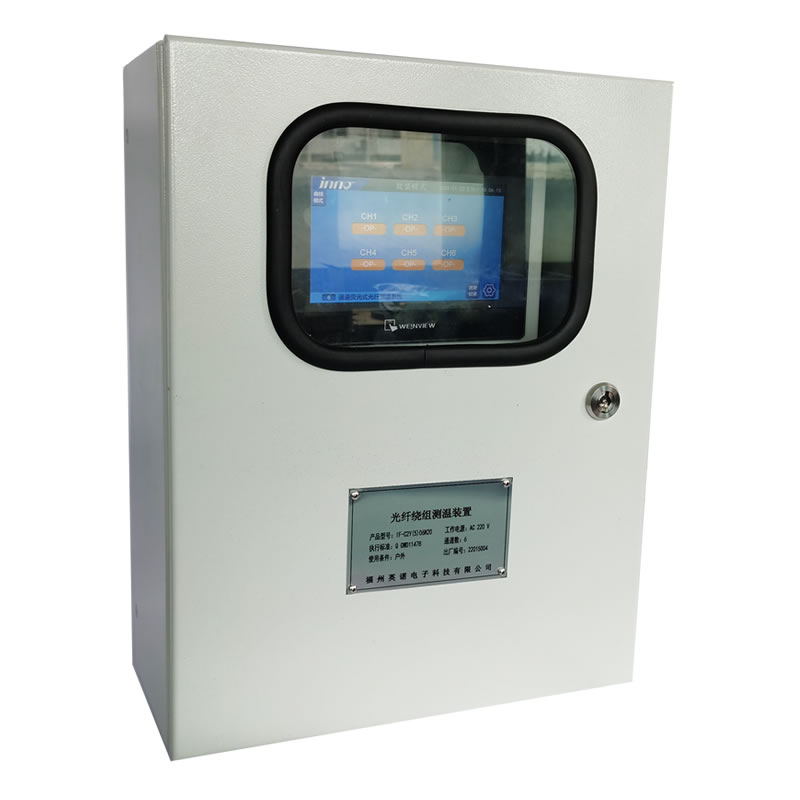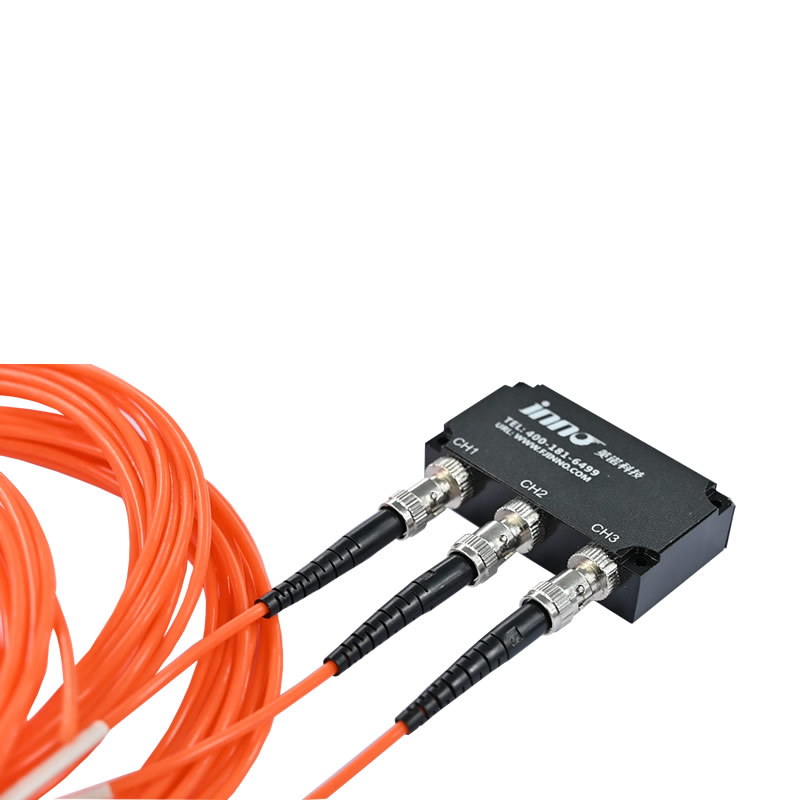For Oil-Immersed Transformers
Our most rugged sensors, designed for direct winding hot-spot measurement to prevent thermal aging and enable dynamic load management.
FJINNO is a vertically integrated manufacturer providing a comprehensive portfolio of high-performance fiber optic sensors. We deliver precision, safety, and reliability where it matters most.
Transformer winding fiber optic sensor
Our entire product portfolio is built on the inherent superiority of using light for measurement in environments where traditional electrical sensors fail or pose a risk.
Total resistance to EMI, lightning, and radiation. Intrinsically safe for explosive areas.
Drift-free, high-precision measurements based on the immutable properties of light.
Resistant to corrosion, humidity, and mechanical stress, ensuring decades of reliable operation.
From cryogenic temperatures to extreme strain, a single technology platform solves diverse challenges.
We manufacture a complete range of fiber optic sensing systems, from high-precision point sensors for critical equipment to fully distributed systems for monitoring vast infrastructure. Every product is developed and produced in our own dedicated factory.
Based on our advanced fluorescent fiber optic sensor technology, these systems provide unparalleled accuracy at specific, critical locations. They are the core of our equipment health monitoring solutions.
Our most rugged sensors, designed for direct winding hot-spot measurement to prevent thermal aging and enable dynamic load management.
Monitors winding temperatures to protect against overheating caused by harmonic currents or ventilation issues in data centers and industrial sites.
Provides continuous thermal monitoring of critical connections inside MV/HV switchgear to provide early warning of loose connections and prevent arc flash.
Biocompatible, high-accuracy sensors for use in applications like catheter-tip thermal mapping and R&D lab experiments where precision is paramount.
A completely non-metallic, anti-electromagnetic RF interference MRI sensor. Provides temperature data for patient safety and coil monitoring without image artifacts.
Embeddable sensors robust enough to be installed in generator stator slots and on rotors, providing critical data to prevent overheating and insulation failure.
The core of our measurement system, the interrogator (also known as a transmitter or monitoring device), is a high-precision instrument that sends and receives the optical signal. It translates the data from the sensor into a readable temperature value and communicates it via standard industrial protocols. We build a full range of interrogators to meet any project scale.
Compact 1 / 3 / 4 / 6 / 9 channel devices, perfect for single-asset monitoring like a power transformer or for use in a research lab.
Rack-mountable 32 / 64 multi-channel fiber optic monitoring devices designed for substation-wide monitoring or large industrial process control.

For applications that require continuous monitoring over vast distances or at thousands of points, turning the fiber itself into the sensor.
Provides a continuous temperature profile along kilometers of fiber, perfect for:
Detects vibrations and classifies disturbances along an asset for:
Delivers high-fidelity acoustic monitoring for complex applications, including:
A quasi-distributed network of thousands of sensors on a single fiber, providing high-precision data for civil and aerospace engineering. Primarily used for stress and strain monitoring in bridges, dams, and aircraft wings.
Answering common questions about the advantages and applications of our fiber optic temperature sensor technology.
The primary advantage is its complete immunity to electromagnetic interference (EMI/RFI), making it perfect for high-voltage environments like transformers and switchgear where traditional sensors fail.
Yes. They are intrinsically safe because they are made of glass and use light for measurement, with no electricity at the sensor head. This eliminates any risk of sparks.
They are extremely accurate, typically with a precision of ±0.2°C. Because the measurement is based on a physical property of light, the accuracy is stable over the sensor's entire lifespan.
No. One of the key benefits is their long-term stability. Our fluorescent sensors do not drift over time and do not require periodic recalibration, saving significant maintenance costs.
While thermocouples and RTDs are effective general-purpose sensors, they are susceptible to EMI and are unsafe for direct contact in high-voltage applications. Fiber optics provide accurate data where those sensors cannot be used.
It provides the true hot-spot temperature, which is the leading indicator of a transformer's health and aging. This allows for optimized loading and prevents premature failure, unlike estimated WTI values.
Absolutely. Our MRI-safe sensors are specifically designed for this. They are non-metallic and do not interfere with the magnetic fields, ensuring both patient safety and clear image quality.
DTS turns an entire fiber optic cable into a continuous temperature sensor, measuring temperature at thousands of points simultaneously. It's ideal for monitoring long assets like pipelines, power cables, and tunnels.
Distributed Vibration/Acoustic Sensing detects the unique vibrations caused by activities like climbing, digging, or walking along a fiber optic cable buried or attached to a fence, providing real-time intrusion alerts.
FBG sensors are excellent for high-precision stress and strain monitoring. They are widely used in civil engineering to monitor the structural health of bridges, dams, and buildings.
They are extremely durable. The fiber is protected by robust cabling materials designed to resist chemicals, moisture, high temperatures, and mechanical stress for decades.
It's the electronic device that sends a light signal down the fiber, receives the reflected signal, and accurately calculates the physical measurement (e.g., temperature) from changes in the light's properties.
A multi-channel monitoring device can connect to and read data from multiple independent fiber optic sensors simultaneously. Our systems range from 1 to 64 channels per device.
Yes. Monitoring dry-type transformers is a key application. Our sensors can be placed directly on the windings to detect hot-spots caused by harmonic currents or poor ventilation.
The core sensing element is made of high-purity glass fiber (silica). The protective cabling can be customized with materials like Teflon, PFA, or Polyimide depending on the application's requirements.
For point sensors, the cable between the sensor and the interrogator can be several kilometers long with no loss of accuracy. For distributed systems, we can monitor continuous lengths of up to 50-100 km from a single device.
While the initial hardware cost can be higher than a simple thermocouple, the total cost of ownership is often much lower due to zero maintenance, no recalibration, and the prevention of catastrophic failures of multi-million dollar assets.
Yes. As a manufacturer, we specialize in providing a complete solution, including custom sensor designs, interrogators, software, and commissioning support for your specific project.
Every component is manufactured and tested in our own state-of-the-art factory under strict ISO quality control standards to ensure reliability and performance.
We are an active supplier and partner on major projects across Southeast Asia and the Middle East, with solutions specifically engineered for the unique challenges of these markets.
We are an active exporter and technology partner on critical infrastructure projects across these key regions, with robust solutions engineered for local environmental and economic demands.
We are more than a component supplier. We are a vertically integrated manufacturer offering comprehensive partnership models.
Integrate our sensor technology directly into your equipment. We provide full engineering support and private label options.
We work with a global network of dealers and distributors, offering competitive pricing for bulk orders.
Our R&D labs can develop a fully custom sensor solution for unique and challenging applications.
From a single sensor to a nationwide network, our team is ready to help you design the optimal monitoring solution. Contact us today for a technical consultation and project quote.
Request a Consultation